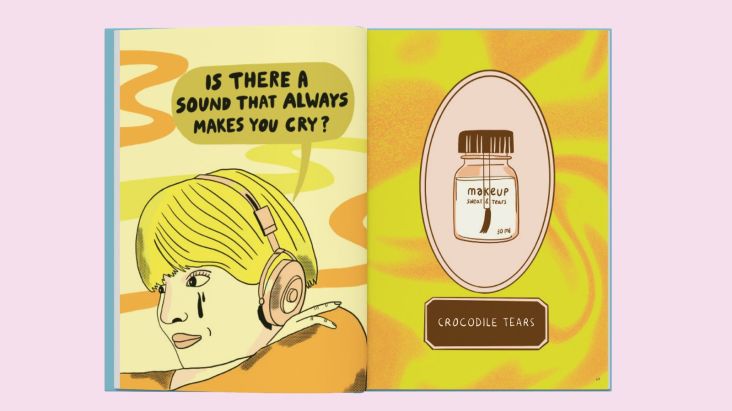10 must-read graphic design books for 2024
Get inspired, encounter new ideas and refresh your design skills with our curated list of 10 books every graphic designer should read this year.

Image licensed via Adobe Stock
As the graphic design landscape continues to evolve, staying inspired and keeping up with the latest trends, philosophies, and best practices is crucial for anyone looking to create impactful work. And there's nothing like sitting down with a good book to gain insights, ideas, and guidance from some of the profession's most respected authorities.
From grids to the branding process, these superb books cover a diverse array of topics between them. Immerse yourself in their pages to unlock new perspectives, challenge conventions, and unlock your creative potential in 2024 and beyond.
So whether you're a seasoned graphic designer seeking to refresh your creative approach, a student building a solid foundation, or someone curious about the power of design to shape our world, these volumes provide a rich source of knowledge and inspiration.
1. Making and Breaking the Grid by Timothy Samara
You can't be a decent graphic designer without understanding grids. And this essential, easy-to-use guide takes an in-depth look at using them as the foundational structure for layouts. With over 150,000 copies sold, the new third edition updates things with a re-envisioned look at grid history from diverse cultural perspectives. It provides an expanded discussion of grids for modern interactive and UX/UI scenarios.
The book begins by explaining basic principles such as column, compound and modular grids. It then demonstrates methods for effectively constructing and implementing grids through a series of examples. Finally, it offers innovative techniques for deconstructing and breaking the rules to create unique, dynamic compositions. With hundreds of full-colour layout concepts and diagrams, this is a great help to graphic designers in both mastering and transcending the grid.
2. Design as an Attitude by Alice Rawsthorn
Graphic design is partly a skill to be learned, but it's also an approach, a philosophy, an attitude. To explain what that looks like, award-winning design critic Alice Rawsthorn uses this book to explore how design goes far beyond aesthetics to fundamentally shape our daily lives and drive social progress.
This updated edition responds to today's most pressing issues: the impacts of the pandemic, rapidly evolving technology, escalating climate change, rising inequality and complex identity politics. Alice surveys the resourceful, ambitious ways an emerging generation of designers harnesses new tools and technologies to address these intersectional global challenges. In short, this book provides a comprehensive overview of contemporary design's dynamism and growing public impact.
3. Graphic Design: a New History by Stephen J. Eskilson
To know where you're going, you need to know where you're coming from. And so this comprehensive graphic design history text book contains over 540 images illustrating the profound influences of world events, cultural movements and technological innovations on the evolution of graphic design.
Newly revised and updated, this latest edition has an expanded introduction covering the ancient origins of writing systems and a new chapter exploring current digital design trends. Organised chronologically, the book reveals how politics, economics, war, nationalism, colonialism, gender roles and art have shaped the work of graphic designers across different eras. It spotlights their innovative use of print, film, web, multimedia and other emerging technologies to communicate ideas visually.
Overall, this is an insightful, visually rich account of graphic design's development over centuries.
4. Typography Essentials by Ina Saltz
Originally published in 2009, this hands-on typography guide has since been fully refreshed with updated content, new visuals and a redesigned layout. Divided into sections on letters, words, paragraphs and page design, it succinctly explains 100 essential principles for working with type effectively.
Each principle is accompanied by an insightful explanation and inspiring examples of its creative use, curated from books, magazines, posters, and other international design work. This conveniently portable reference covers all the key practical considerations for masterful typography, from micro typographic details to macro layout strategies.
With its compact format and visual-led approach, Typography Essentials makes the study of type enjoyable, approachable and applicable for any graphic designer.
5. Design for Identity by Jessica Bantom
Dealing with clients who are stuck in the stone age? Then this book will help you persuade them that times have changed. Essentially, the book makes a business case for why companies must evolve past outdated cultural mindsets through more equitable, culturally competent design thinking.
It introduces six key habits designers should adopt, like seeking direct user engagement to truly understand challenges. Case studies demonstrate how this philosophy promotes equity, ensuring design better reflects the world's diversity.
Overall, Jessica Bantom advocates for human-centred design processes that embrace diversity and create authentic resonance with all audiences. She examines the widespread lack of inclusivity in design across different sectors and points to familiar brand missteps rooted in stereotypes and assumptions about customers' lived experiences.
6. Graphic Design Play Book by Sophie Cure and Aurélien Farina
Do you find design theory boring? Then, here's the antidote. This highly original book uses an entertaining, hands-on approach to introduce core graphic design concepts and techniques. Through a series of puzzles, games, and interactive visual challenges, readers actively engage with principles like typography, signage, posters, and branding.
Clever matching games, spot-the-difference exercises, drawing activities, and more make learning about visual communication fun. The playful activities accompany further explanations, tips and a glossary of terms.
A special loose-leaf section provides stickers, die-cut templates and coloured paper for completing the projects. Showcasing work from acclaimed designers like Otl Aicher and Otto Neurath, it blends education with an exploratory, puzzle-solving experience.
7. Designing Brand Identity by Alina Wheeler
Deemed the quintessential resource on brand identity design, this fifth edition is a comprehensive, bestselling guide to the entire branding process. It covers the full journey from research and strategy to final execution, launch and long-term brand governance.
There's a lot to take in, so the book is helpfully divided into sections detailing brand basics, process essentials, and extensive case studies. It provides over 100 entries on key branding subjects, tools such as checklists and diagrams, best practice insights, and 50 real-world case studies that outline brand goals, processes, solutions, and results.
With 700+ brand illustrations and 400 quotes from industry experts, this book is an authoritative and actionable brand identity bible.
8. Visual Communication by Jonathan Baldwin and Lucienne Roberts
Cultural theory studied in arts programs and the practical reality of working as a graphic designer often seem worlds apart. This ambitious book aims to fill the gap.
Through contextual essays by renowned designers, including Neville Brody, Michael Bierut and Joan Farrer, it explores how theoretical concepts from sociology, semiotics, philosophy and other disciplines can productively inform and inspire visual communication strategies. The writings encourage students to apply critical thinking to their design process for developing insightful, culturally resonant concepts that accurately reflect current themes and conversations.
With diverse perspectives represented across design school curricula worldwide, this book acts as a guide for forming substantiated creative visions grounded in the zeitgeist.
9. The Designer's Dictionary of Color by Sean Adams
Award-winning educator Sean Adams provides this in-depth reference exploring 30 essential colours for art and design. Rather than the traditional colour wheel organisation, hues are grouped into warm, cool, neutral and speciality sections to reflect a more practical creative process.
Each colour entry includes detailed information like charts of palette ranges and variations. Adams documents each shade's creative history and cultural associations, from the iconic turquoise of Reid Miles' album covers to the nostalgic avocado green of 1970s cars. Successful modern applications across disciplines are also highlighted to inspire further research.
With astute yet succinct descriptions, this book offers designers an invaluable resource for harnessing the expressive power of colour in their work.
10. The Creative Act by Rick Rubin
Legendary music producer Rick Rubin knows a lot about creativity, and graphic designers can learn a lot from him. In this eye-opening book, he imparts wisdom from his decades of guiding artists across all genres through deeply fertile creative processes.
Rubin is celebrated for helping musicians transcend their artistic boundaries and self-imposed limitations to reconnect with unrestrained creative innocence. This empowers the artists' authentic, surprising, and transcendent expressions to emerge naturally.
Through his philosophical reflections, Rubin reframes creativity as not just a career pursuit or output but as a universal life force accessible and vitalising for everyone. He posits that nurturing individual creativity is among our most important human responsibilities. All in all, this beautifully written book lights a path for readers to more readily experience creativity's power and exhilaration in their own lives.

























